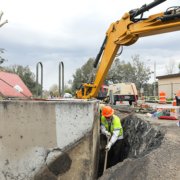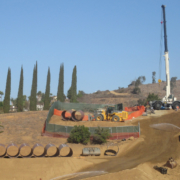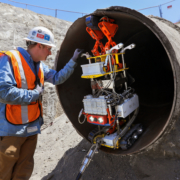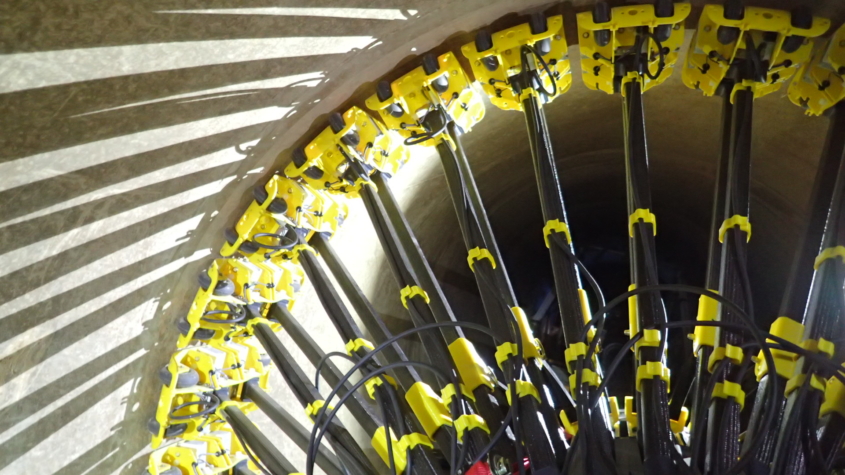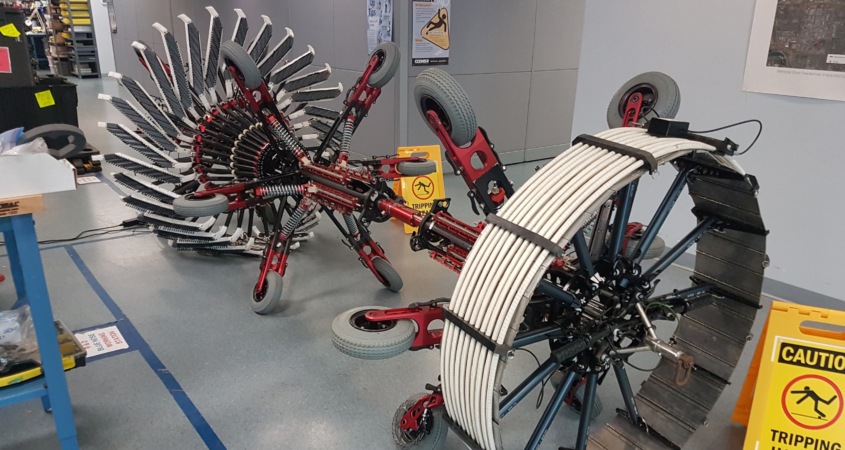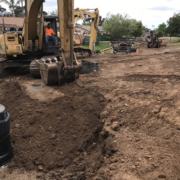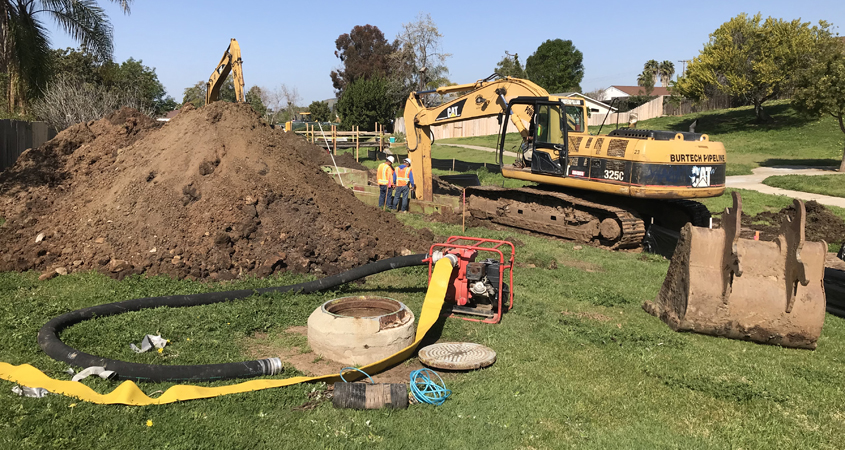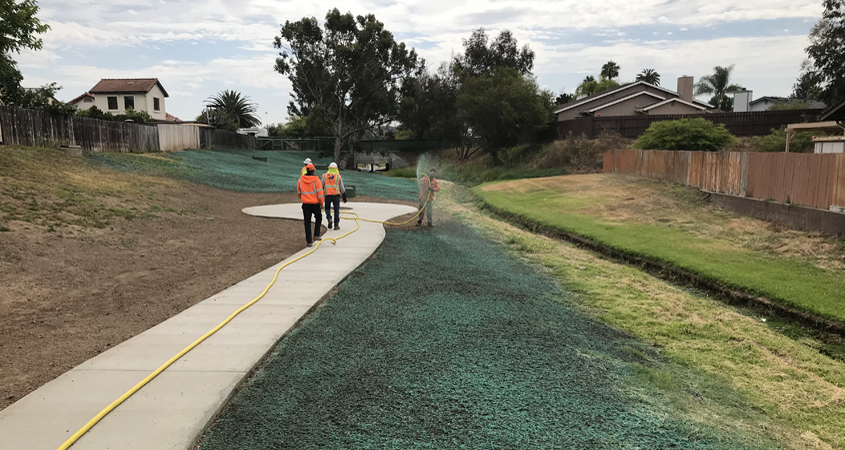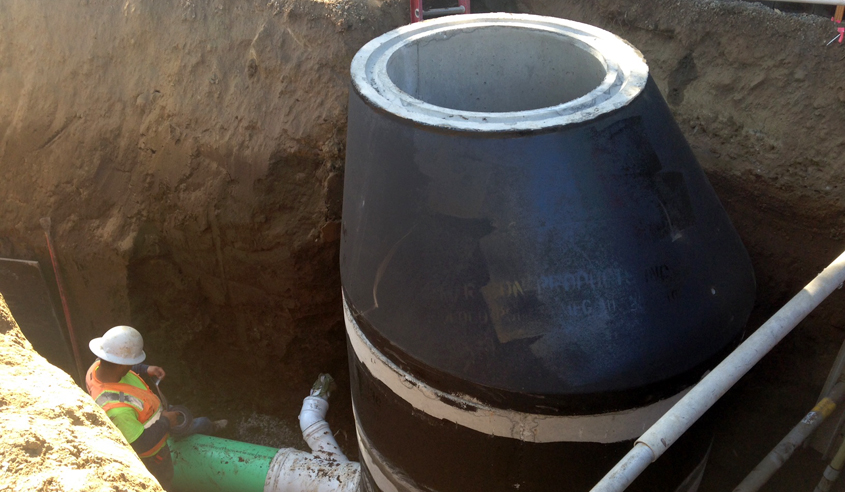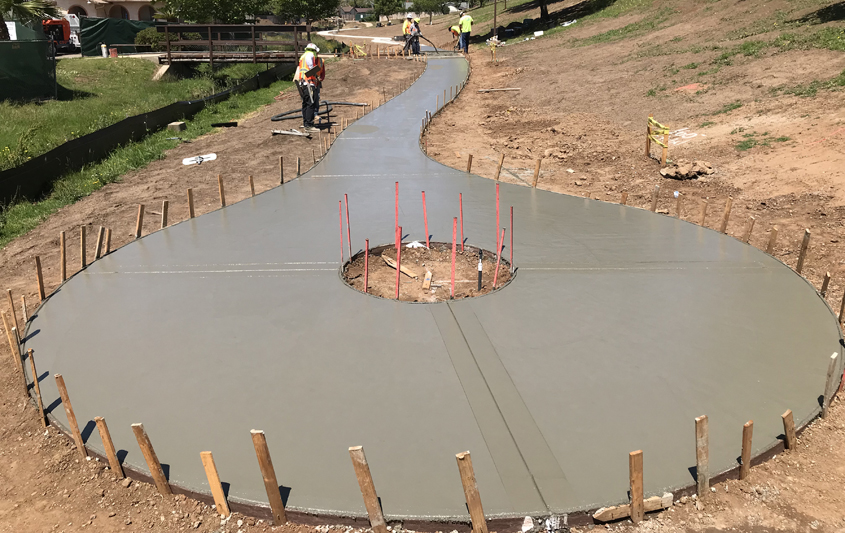Major Rehabilitation of First Aqueduct Complete
The San Diego County Water Authority recently completed a major rehabilitation project on the historic First Aqueduct in North San Diego County. The project renovated and replaced dozens of structures on two large-diameter pipelines, including the historic Pipeline 1. Pipeline 1 delivered the first imported water to the San Diego region in 1947 and remains a vital part of the regional water delivery system. The construction contract for the project was worth approximately $30 million.
Coordination with member agencies key to success
Over the past two years, four coordinated shutdowns in collaboration with member agencies and communities in North San Diego County ensured minimum impact to nearby neighborhoods and water users.
“The First Aqueduct delivered imported water to our region for the first time more than 70 years ago, and it remains critical to water supply reliability for our region to this day,” said Gary Croucher, chair of the Water Authority Board of Directors. “Through coordination throughout the Water Authority and collaboration with our member agencies, we completed this extraordinarily complex project to ensure these pipelines operate for generations to come.”
The project was completed on January 12 and will be presented to the Water Authority’s Board of Directors at their March meeting.
Proactive asset management program maintains reliable water supplies
The timely rehabilitation of the First Aqueduct is part of the Water Authority’s proactive asset management program. A key element of providing safe and reliable water supplies is continually assessing the agency’s 310 miles of large-diameter pipeline and making the upgrades necessary to continue serving the region. That work is funded through water bills paid by residents and businesses across the county to sustain the region’s $245 billion economy and quality of life.
The First Aqueduct project began in early 2019 and was one of the most complicated pipeline retrofits in the Water Authority’s history. The upgrades included replacing 14,500 linear feet of lining on the steel pipe sections of Pipeline 1, removing 16 associated structures and retrofitting 46 structures. All this work was accomplished while ensuring regional water service remained safe and reliable. In addition, redundant connections to six flow control facilities were added between the two pipelines to improve the aqueduct’s operational flexibility.
Collaboration between departments increased efficiency
The Water Authority’s Engineering Department provided construction management and inspection for the retrofit. Before the pipeline was returned to service, secondary tie-in connections to flow control facilities were added and crews removed bulkheads that were used to isolate pipeline sections during the rehabilitation work. Once the work was completed, staff inspected all work areas in the pipeline to ensure they were clear of construction debris.
After the bulkheads were removed, the Operations and Maintenance team disinfected the highly impacted work areas and then refilled the aqueduct to prepare for a second disinfection of both pipelines with chlorine. Water samples at locations throughout the aqueduct were collected and analyzed to ensure the system was safe to return to service. Once all the samples passed analysis, all flow control facilities were placed back in service and the aqueduct was returned to normal operations.

